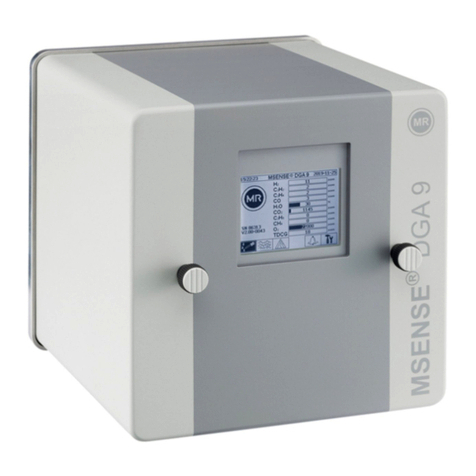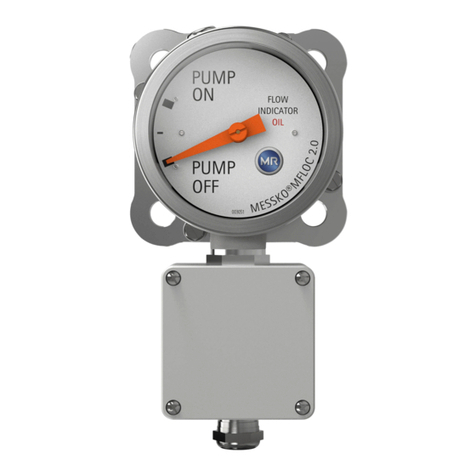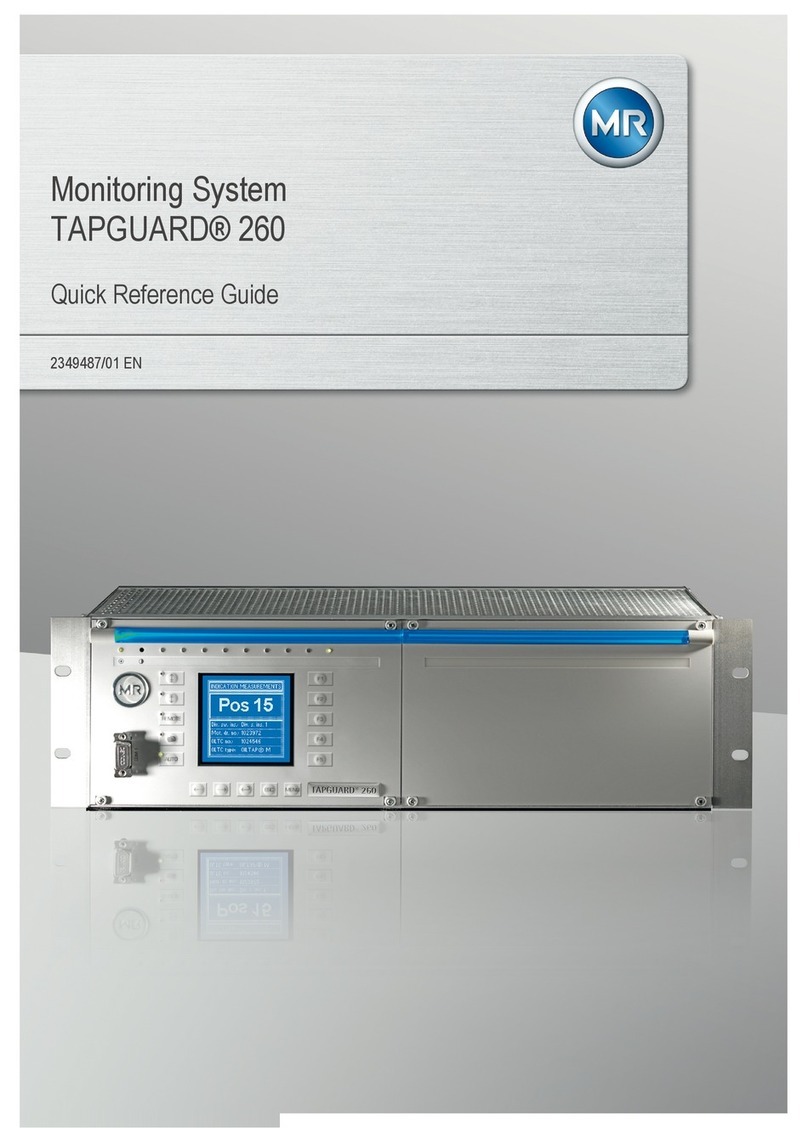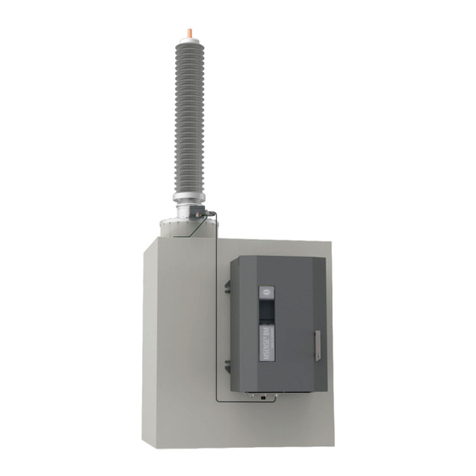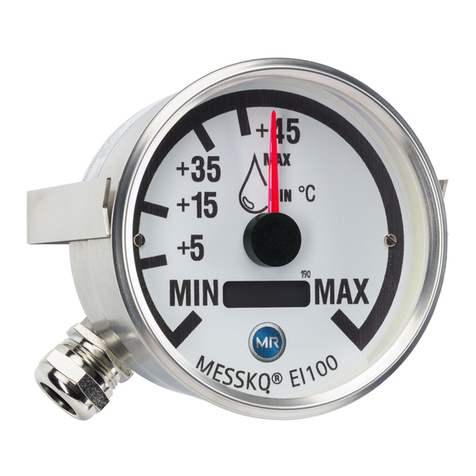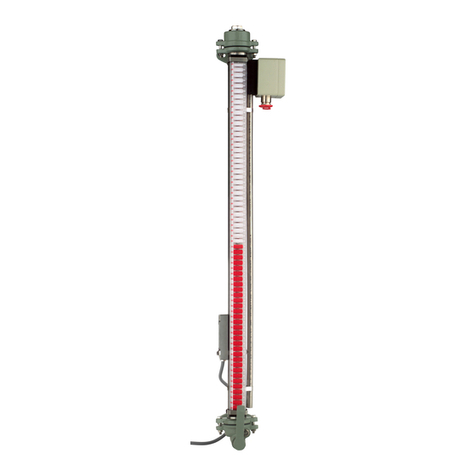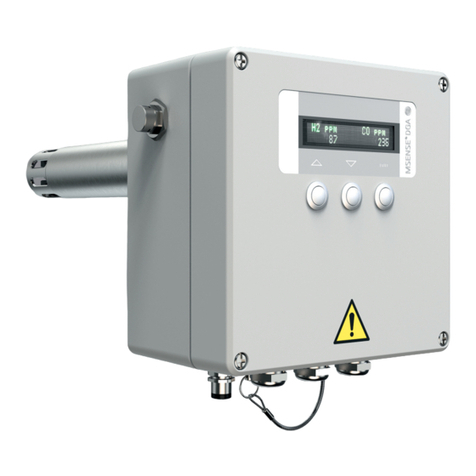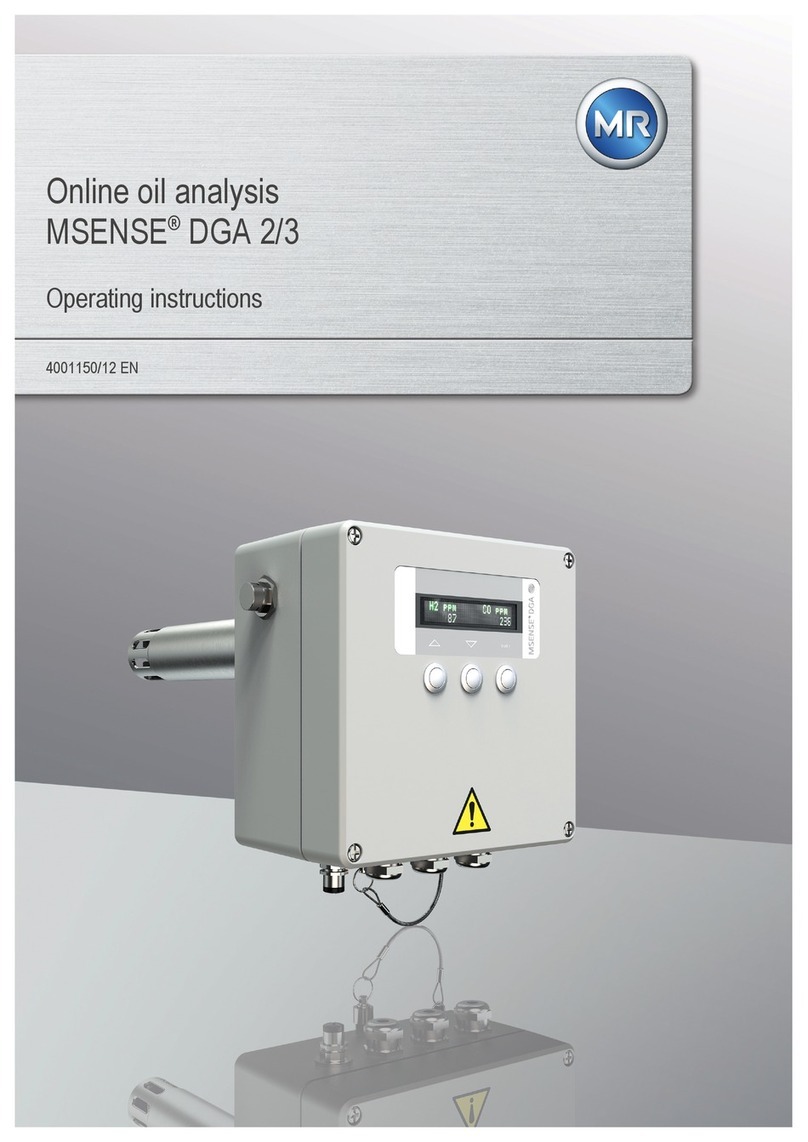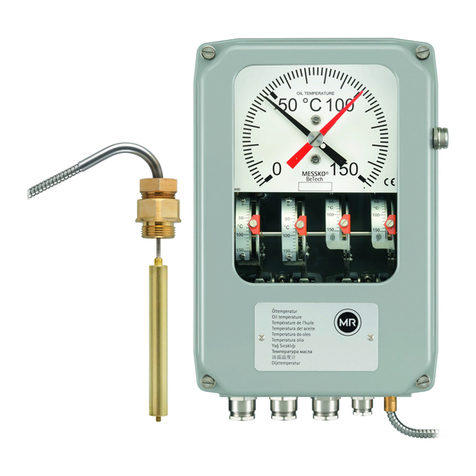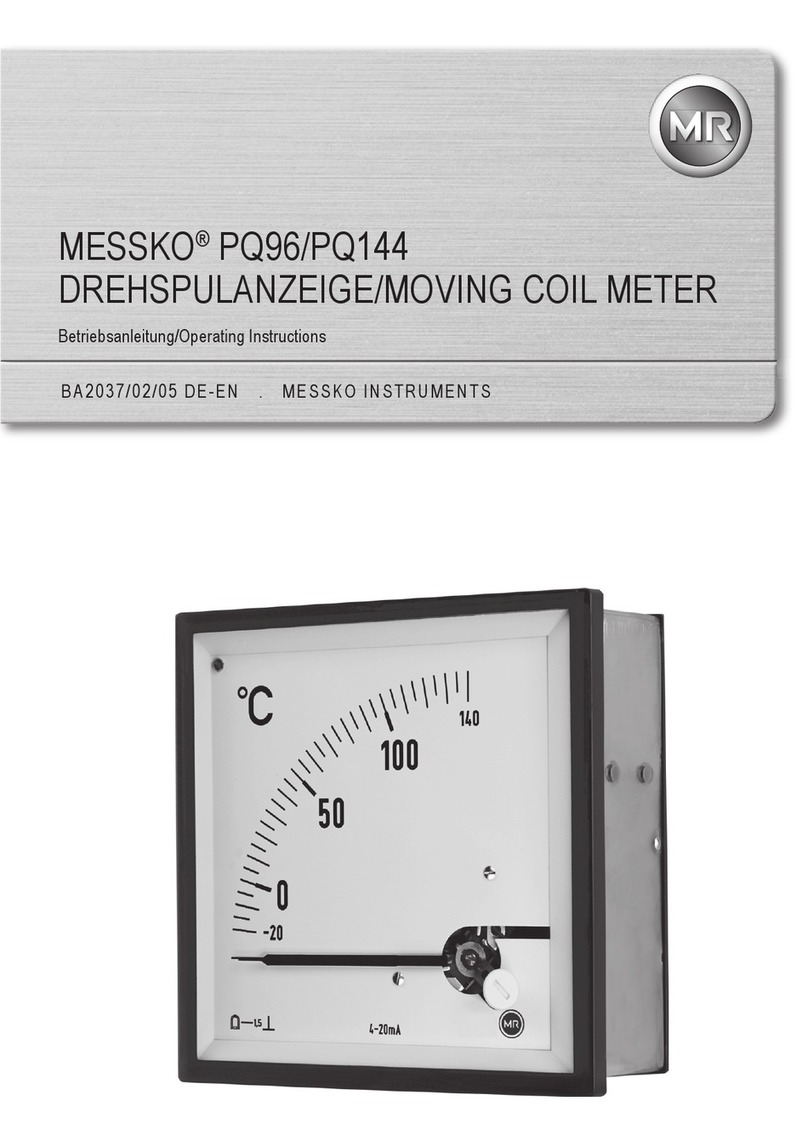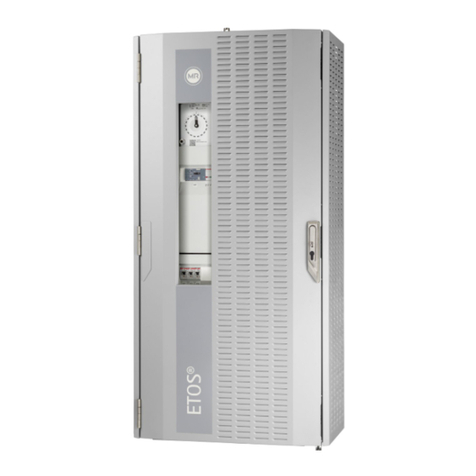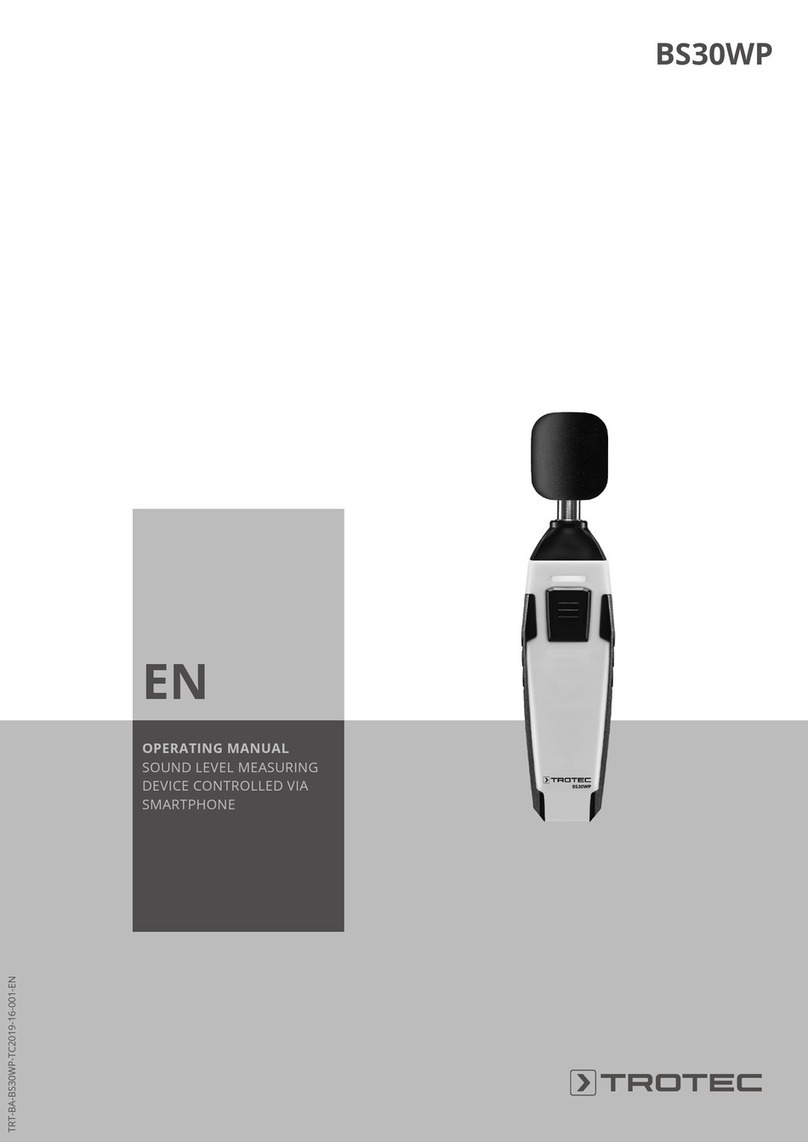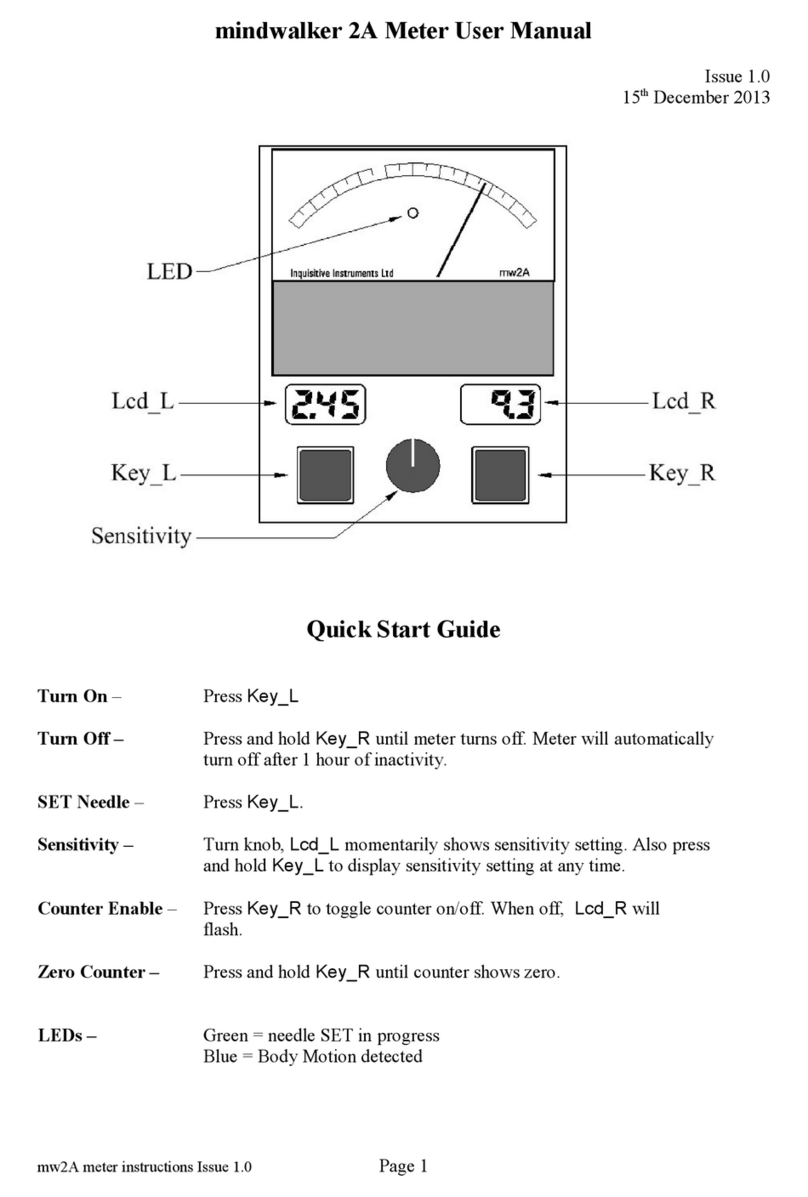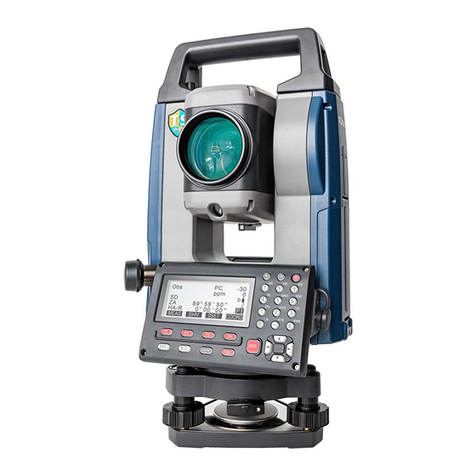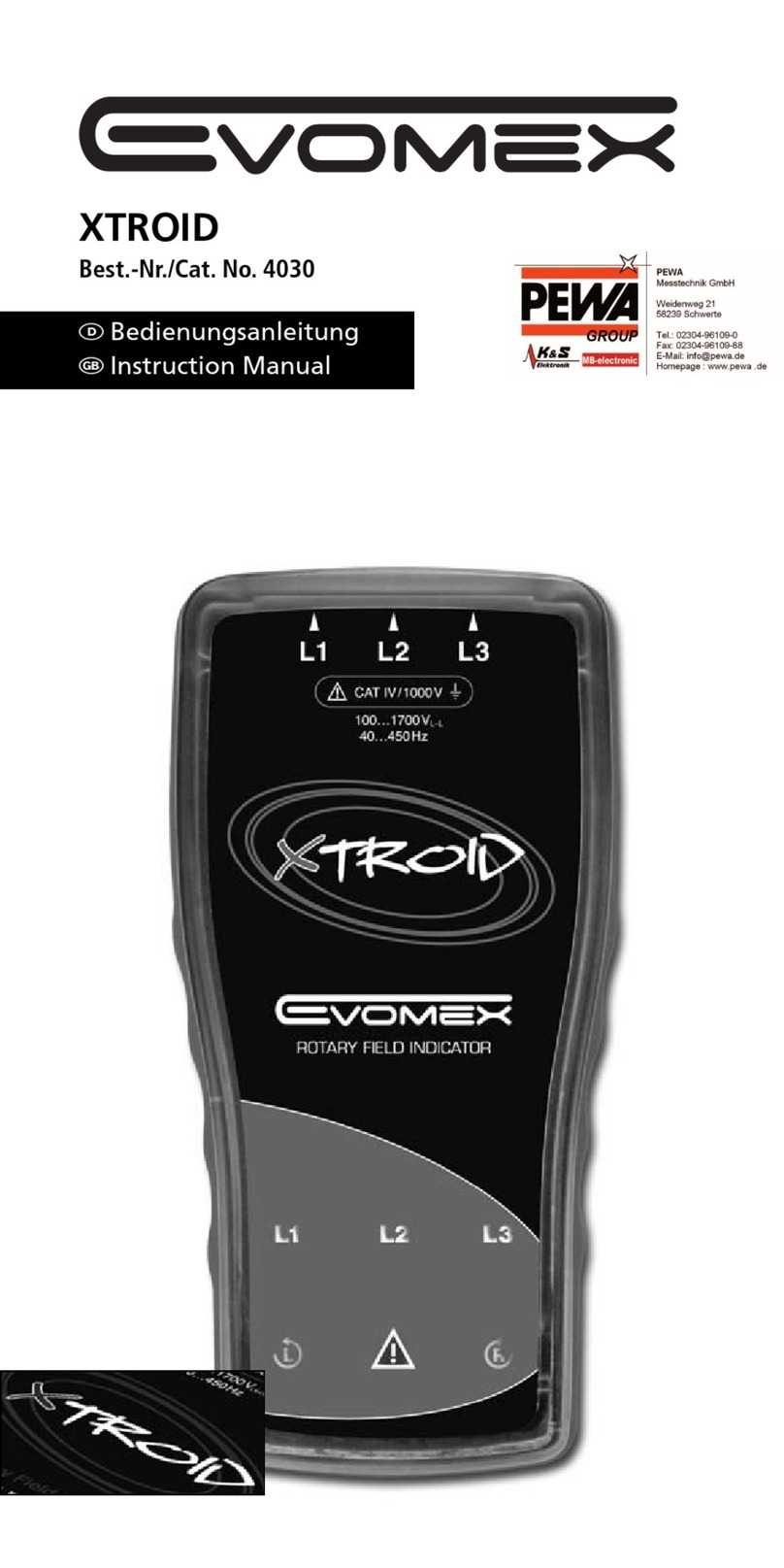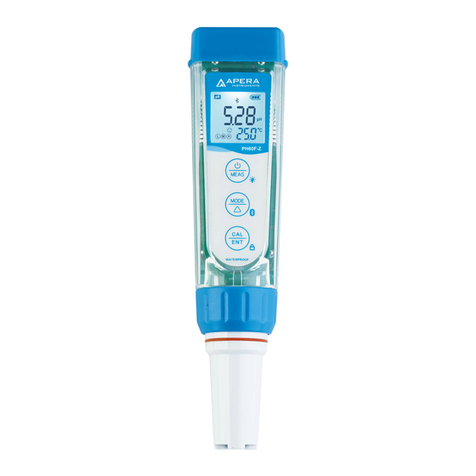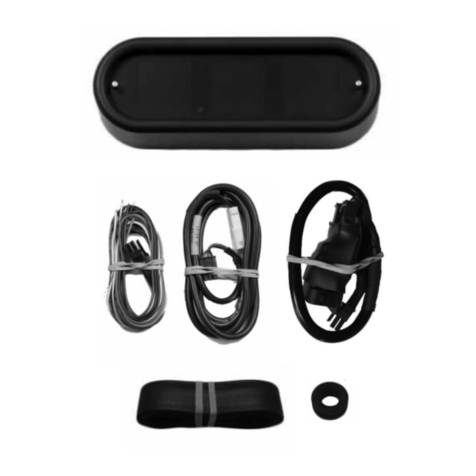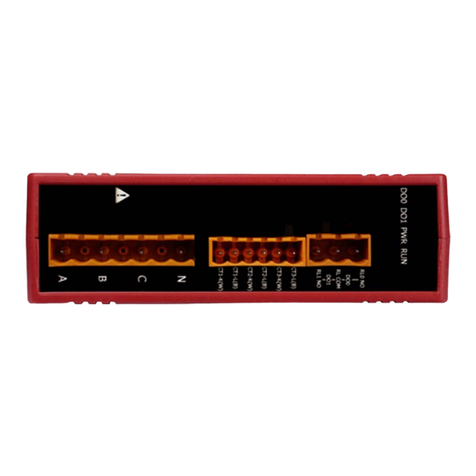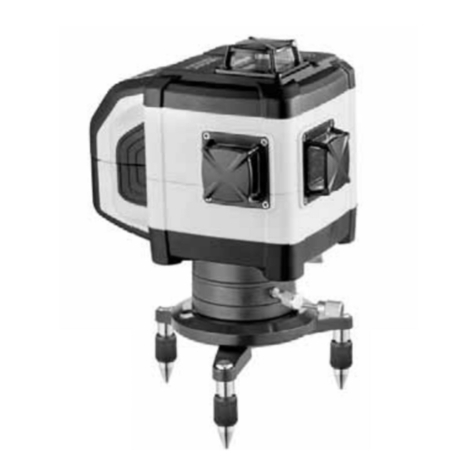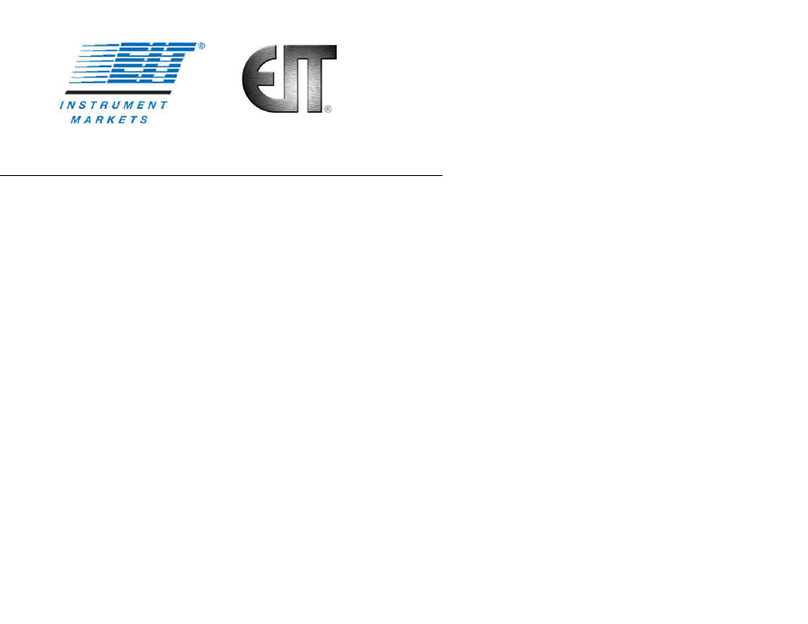MR MESSKO MTO User manual

Oil level indicator
MESSKO® MTO
Operating instructions
5972470/03 EN

© All rights reserved by Maschinenfabrik Reinhausen
Dissemination and reproduction of this document and use and disclosure of its
content are strictly prohibited unless expressly permitted.
Infringements will result in liability for compensation. All rights reserved in the event
of the granting of patents, utility models or designs.
The product may have been altered since this document was published.
We reserve the right to change the technical data, design and scope of supply.
Generally the information provided and agreements made when processing the
individual quotations and orders are binding.
The original operating instructions were written in German.

Table of contents
35972470/03 EN
1 Introduction...........................................................................7
1.1 Manufacturer.................................................................................... 7
1.2 Completeness.................................................................................. 7
1.3 Safekeeping..................................................................................... 7
1.4 Notation conventions ....................................................................... 7
1.4.1 Hazard communication system .................................................................... 7
1.4.2 Information system....................................................................................... 8
1.4.3 Instruction system ........................................................................................ 9
1.4.4 Typographic conventions ............................................................................. 9
2 Security ...............................................................................11
2.1 Intended use .................................................................................. 11
2.2 Fundamental Safety Instructions ................................................... 11
2.3 Personnel qualification................................................................... 14
2.4 Personal protective equipment ...................................................... 15
3 IT security............................................................................16
4 Product description............................................................17
4.1 Scope of delivery ........................................................................... 17
4.2 Function description....................................................................... 17
4.3 Design............................................................................................ 20
4.4 Versions......................................................................................... 22
4.4.1 Radial float movement ............................................................................... 24
4.4.2 Axial float movement.................................................................................. 24
4.5 Safety markings ............................................................................. 25
4.6 Nameplate ..................................................................................... 26
5 Packaging, transport and storage ....................................27
5.1 Purpose ......................................................................................... 27
5.2 Suitability, structure and production............................................... 27

Table of contents
4 5972470/03 EN
5.3 Markings ........................................................................................ 27
5.4 Transportation, receipt and handling of shipments........................ 27
5.5 Storage of shipments..................................................................... 29
5.6 Further transport ............................................................................ 29
6 Mounting .............................................................................30
6.1 Preparation .................................................................................... 31
6.1.1 Electromagnetic compatibility..................................................................... 31
6.1.2 Safeguarding the power circuits................................................................. 33
6.1.3 Cable recommendation .............................................................................. 34
6.1.4 Checking the flanges.................................................................................. 35
6.1.5 Gasket requirements.................................................................................. 37
6.2 Preparing the connecting flange on the oil conservator................. 37
6.2.1 Standard flange.......................................................................................... 38
6.2.2 RM flange (MTO-ST160RM) ...................................................................... 39
6.2.3 NAT/DS flange (MTO-ST160RM) .............................................................. 41
6.3 Mounting the MTO on the oil conservator...................................... 43
6.3.1 Mounting an MTO with radial float rod ....................................................... 43
6.3.2 Mounting an MTO with axial float rod......................................................... 49
6.3.3 Mounting the MTO on an inclined flange ................................................... 54
6.4 Electrical connection...................................................................... 56
6.4.1 Connecting MTO with cable screw connection / NPT cable screw
connection.................................................................................................. 57
6.4.2 Connecting the MTO with connector.......................................................... 73
6.4.3 MTO with relay box (optional) .................................................................... 75
7 Commissioning...................................................................77
7.1 Transporting in the installed state.................................................. 77
7.2 Function tests ................................................................................ 77
7.3 Configuring Modbus....................................................................... 78
8 Maintenance, inspection and care ....................................80

Table of contents
55972470/03 EN
9 Fault elimination .................................................................81
9.1 General malfunctions (type TT) ..................................................... 82
9.2 General malfunctions (types TTM and TTMR) .............................. 83
9.3 Malfunctions of the 4...20mA current loop .................................... 83
9.4 Modbus communication malfunctions (types TTM and TTMR) ..... 85
9.5 Relay box malfunctions (type TTMR) ............................................ 86
9.6 Self-diagnostic devicestatus (types TTM and TTMR)................... 87
10 Disposal...............................................................................89
10.1 SVHC information in accordance with the REACH regulation....... 89
11 Technical data.....................................................................90
11.1 Ambient conditions ........................................................................ 90
11.2 Electrical connection...................................................................... 91
11.2.1 Micro-switches ........................................................................................... 91
11.2.2 4…20mA outputs ...................................................................................... 93
11.2.3 RS485 interface (types TTM and TTMR) ................................................... 94
11.2.4 Relay box relays (type TTMR) ................................................................... 94
11.2.5 Modbus RTU .............................................................................................. 95
11.2.6 Connection options .................................................................................... 98
11.3 Dimensions and weight................................................................ 102
11.3.1 Dimensions (radial float movement)......................................................... 102
11.3.2 Dimensions (axial float movement) .......................................................... 103
11.3.3 Float gauge .............................................................................................. 103
12 Appendix ...........................................................................110
12.1 9144260_000............................................................................... 111
12.2 9146521_000............................................................................... 112
12.3 9146747_000............................................................................... 113
12.4 9147750_000............................................................................... 114
12.5 9147922_000............................................................................... 115

Table of contents
6 5972470/03 EN
12.6 9150605_000............................................................................... 116
12.7 9150921_000............................................................................... 117
12.8 9151305_000............................................................................... 118
12.9 7036358_000............................................................................... 119
12.10 7036293_000............................................................................... 120
12.11 6771687_000............................................................................... 121
12.12 6771692_000............................................................................... 122
12.13 6771696_000............................................................................... 123
Glossary ............................................................................124

1 Introduction
75972470/03 EN
This technical file contains detailed descriptions on the safe and proper in-
stallation, connection, commissioning and monitoring of the product.
This technical document is intended solely for specially trained and autho-
rized personnel.
1.1 Manufacturer
Maschinenfabrik Reinhausen GmbH
Falkensteinstrasse 8
93059 Regensburg
Germany
Tel.: +49 941 4090-0
E-mail: [email protected]
Internet: www.reinhausen.com
MR Reinhausen customer portal: https://portal.reinhausen.com
Further information on the product and copies of this technical file are avail-
able from this address if required.
1.2 Completeness
This technical file is incomplete without the supporting documents.
The following documents apply to this product:
▪ Operating instructions
▪ Works certification
1.3 Safekeeping
Keep this technical file and all supporting documents ready at hand and ac-
cessible for future use at all times.
1.4 Notation conventions
This section contains an overview of the symbols and textual emphasis
used.
1.4.1 Hazard communication system
Warnings in this technical file are displayed as follows.

1 Introduction
8 5972470/03 EN
1.4.1.1 Warning relating to section
Warnings relating to sections refer to entire chapters or sections, sub-sec-
tions or several paragraphs within this technical document. Warnings relat-
ing to sections have the following format:
WARNING
Type of danger!
Source of the danger and its consequences.
► Action
► Action
1.4.1.2 Embedded warning information
Embedded warnings refer to a particular part within a section. These warn-
ings apply to smaller units of information than the warnings relating to sec-
tions. Embedded warnings use the following format:
DANGER! Instruction for avoiding a dangerous situation.
1.4.1.3 Signal words
Depending on the product, the following signal words are used:
Signal word Meaning
DANGER Indicates a hazardous situation which, if not avoided, will result in
death or serious injury.
WARNING Indicates a hazardous situation which, if not avoided, could result
in death or serious injury.
CAUTION Indicates a hazardous situation which, if not avoided, could result
in minor or moderate injury.
NOTICE Indicates measures to be taken to prevent damage to property.
Table1: Signal words in warning notices
1.4.2 Information system
Information is designed to simplify and improve understanding of particular
procedures. In this technical file it is laid out as follows:

1 Introduction
95972470/03 EN
Important information.
1.4.3 Instruction system
This technical file contains single-step and multi-step instructions.
Single-step instructions
Instructions which consist of only a single process step are structured as fol-
lows:
Aim of action
üRequirements (optional).
► Step 1 of 1.
ðResult of step (optional).
ðResult of action (optional).
Multi-step instructions
Instructions which consist of several process steps are structured as follows:
Aim of action
üRequirements (optional).
1. Step 1.
ðResult of step (optional).
2. Step 2.
ðResult of step (optional).
ðResult of action (optional).
1.4.4 Typographic conventions
Typographic convention Purpose Example
UPPERCASE Operating controls,
switches
ON/OFF
[Brackets] PC keyboard [Ctrl] + [Alt]
Bold Software operating con-
trols
Press Continue button

1 Introduction
10 5972470/03 EN
Typographic convention Purpose Example
…>…>… Menu paths Parameter > Control pa-
rameter
Italics System messages, error
messages, signals
Function monitoring alarm
triggered
[► Number of pages] Cross reference [► Page41].
Dotted underscore
.............................................
Glossary entry, abbrevia-
tions, definitions, etc.
Glossary entry
........................
Table2: Typographic conventions used in this technical file

2 Security
115972470/03 EN
▪ Read this technical file through carefully to familiarize yourself with the
product.
▪ This technical file is a part of the product.
▪ Read and observe the safety instructions provided in this chapter in partic-
ular.
▪ Observe the warnings in this technical file to avoid function-related dan-
gers.
▪ The product is manufactured based on state-of-the-art technology. Never-
theless, danger to life and limb for the user or impairment of the product
and other material assets may arise in the event of improper use.
2.1 Intended use
The oil level indicator displays the oil level of the oil conservator.
The product is designed solely for use in stationary large-scale systems.
If used as intended and in compliance with the requirements and conditions
specified in this technical file as well as the warning notices in this technical
file and attached to the product, then the product does not present any dan-
ger to people, property or the environment. This applies throughout the ser-
vice life of the product, from delivery, installation and operation to removal
and disposal.
The following is considered intended use:
▪ Only use the product with the transformer specified in the order.
▪ Operate the product in accordance with this technical documentation, the
agreed-upon delivery conditions and the technical data.
▪ Ensure that all necessary work is performed by qualified personnel only.
▪ Use the equipment and special tools supplied solely for the intended pur-
pose and in accordance with the specifications of this technical file.
2.2 Fundamental Safety Instructions
To prevent accidents, disruptions and damage as well as unacceptable ad-
verse effects on the environment, those responsible for transport, installa-
tion, operation, maintenance and disposal of the product or parts of the prod-
uct must ensure the following:

2 Security
12 5972470/03 EN
Personal protective equipment
Loosely worn or unsuitable clothing increases the danger of becoming
trapped or caught up in rotating parts and the danger of getting caught on
protruding parts. This results in danger to life and limb.
▪ All necessary devices and personal protective equipment required for the
specific task, such as a hard hat, safety footwear, etc. must be worn. Ob-
serve the "Personal protective equipment" [►Section 2.4, Page 15] sec-
tion.
▪ Never wear damaged personal protective equipment.
▪ Never wear rings, necklaces or other jewelry.
▪ If you have long hair, wear a hairnet.
Work area
Untidy and poorly lit work areas can lead to accidents.
▪ Keep the work area clean and tidy.
▪ Make sure that the work area is well lit.
▪ Observe the applicable laws for accident prevention in the relevant coun-
try.
Contamination level
Moisture, dust, sweat and other conductive dirt may cause malfunctions in
the device. To ensure contamination levelII, observe the following informa-
tion:
▪ Wear assembly gloves.
▪ Ensure that no dirt or moisture enters the device when it is open.
▪ Close up the device after installation.
Explosion protection
Highly flammable or explosive gases, vapors and dusts can cause serious
explosions and fire.
▪ Do not install or operate the product in areas where a risk of explosion is
present.

2 Security
135972470/03 EN
Safety markings
Warning signs and safety information plates are safety markings on the
product. They are an important aspect of the safety concept. Safety mark-
ings are depicted and described in the chapter "Product description".
▪ Observe all safety markings on the product.
▪ Make sure all safety markings on the product remain intact and legible.
▪ Replace safety markings that are damaged or missing.
Ambient conditions
To ensure reliable and safe operation, the product must only be operated
under the ambient conditions specified in the technical data.
▪ Observe the specified operating conditions and requirements for the in-
stallation location.
Modifications and conversions
Unauthorized or inappropriate changes to the product may lead to personal
injury, material damage and operational faults.
▪ Only modify the product after consultation with Maschinenfabrik Rein-
hausen GmbH.
Spare parts
Spare parts not approved by Maschinenfabrik Reinhausen GmbH may lead
to physical injury, damage to the product and malfunctions.
▪ Only use spare parts that have been approved by Maschinenfabrik Rein-
hausen GmbH.
▪ Contact Maschinenfabrik Reinhausen GmbH.
Working during operation
You must only operate the product when it is in a sound operational condi-
tion. Otherwise it poses a danger to life and limb.
▪ Regularly check the operational reliability of safety equipment.
▪ Perform the inspection tasks described in this technical document regu-
larly.

2 Security
14 5972470/03 EN
2.3 Personnel qualification
The person responsible for assembly, commissioning, operation and inspec-
tion must have the following qualifications.
Electrically skilled person
The electrically skilled person has a technical qualification and therefore has
the required knowledge and experience, and is also conversant with the ap-
plicable standards and regulations. The electrically skilled person is also pro-
ficient in the following:
▪ Can identify potential dangers independently and is able to avoid them.
▪ Is able to perform work on electrical systems.
▪ Is specially trained for the working environment in which (s)he works.
▪ Must satisfy the requirements of the applicable statutory regulations for
accident prevention.
Technical Service
We strongly recommend having repairs and retrofitting carried out by our
Technical Service department. This ensures that all work is performed cor-
rectly. If repair work is not carried out by our Technical Service department,
please ensure that the personnel who carry out the repairs are trained and
authorized to do so by Maschinenfabrik Reinhausen GmbH.
Maschinenfabrik Reinhausen GmbH
Technical Service
P.O. Box 12 03 60
93025 Regensburg
Germany
Phone: +49 941 4090-0
E-mail: [email protected]
Internet: www.reinhausen.com

2 Security
155972470/03 EN
2.4 Personal protective equipment
Personal protective equipment must be worn during work to minimize risks to
health.
▪ Always wear the personal protective equipment required for the job at
hand.
▪ Never wear damaged personal protective equipment.
▪ Observe information about personal protective equipment provided in the
work area.
Protective clothing Close-fitting work clothing with a low tearing strength,
with tight sleeves and with no protruding parts. It mainly
serves to protect the wearer against being caught by
moving machine parts.
Safety shoes To protect against falling heavy objects and slipping on
slippery surfaces.
Safety glasses To protect the eyes from flying parts and splashing liq-
uids.
Visor To protect the face from flying parts and splashing liq-
uids or other dangerous substances.
Hard hat To protect against falling and flying parts and materials.
Hearing protection To protect against hearing damage.
Protective gloves To protect against mechanical, thermal and electrical
hazards.
Table3: Personal protective equipment

3 IT security
16 5972470/03 EN
Observe the following recommendations to operate the product safely:
▪ Ensure that only authorized personnel have access to the device.
▪ Ensure that the device is only operated by trained personnel who are fa-
miliar with IT security.
▪ If a network-based system (e.g. Ethernet) has access to the bus master,
observe the IT security rules of the system used.

4 Product description
175972470/03 EN
This chapter contains an overview of the design and function of the product.
4.1 Scope of delivery
The product is packaged with protection against moisture and is delivered as
follows:
▪ Oil level indicator
▪ Float gauge with float rod (packed separately if longer than 400mm, oth-
erwise included in the MTO packaging)
▪ Operating instructions
Optional:
▪ Passive 4...20mA analog output
▪ Active 4…20mA analog output and Modbus
▪ Flanged relay box with 4 relays
▪ Standard cable gland M25x1.5 (brass), WADI cable gland (brass or stain-
less steel), offshore cable gland (stainless steel) or EMC double cable
gland
▪ 1/2" 14NPT adapters
▪ ANSI plug or MIL plug
▪ Connecting cable with ANSI socket
Please note the following:
▪ Check the shipment against the shipping documents for completeness
▪ Store the parts in a dry place until installation
▪ The product must remain in the packaging and may only be removed im-
mediately before installation
4.2 Function description
The oil level indicator displays the oil level of the transformer's oil conserva-
tor using a float gauge. so that operating errors (e.g. when filling the trans-
former) can be prevented.
The oil level indicator is comprised of a gauge part and a transmitter part,
which are connected but can be separated. A magnetic coupling transmits
the lifting movement of the float gauge to the pointer axis in the gauge part.

4 Product description
18 5972470/03 EN
Depending on the version, the measured value can be signaled via:
▪ Micro-switches
▪ Passive 4…20mA analog output (TT)
▪ Active 4…20mA analog output (TTM; 24VDC device power supply re-
quired)
▪ Modbus RTU RS485 interface (TTM; 24VDC device power supply re-
quired)
▪ Additional relay contact (TTMR).

4 Product description
195972470/03 EN
Figure1: MTO functional overview
1 Oil level indicator on the oil conser-
vator
2 Oil level indicator
3 Electric switching signals (micro-
switches; optional)
4 Version with two cable glands
5 Relay box (optional) 6 Electronic display
7 SCADA

4 Product description
20 5972470/03 EN
4.3 Design
Depending on the order, the oil level indicator has either one or two cable
glands, one NPT cable gland, one ANSI socket or one MIL socket.
Standard version with cable gland
As an option, the M25x1.5 cable gland is also available in other versions,
such as WADI (water-tight) or offshore.
Figure2: Version with two cable glands and a relay box
1 Pointer 2 Cover plate
3 Bayonet seal ring including viewing
glass and rubber gasket
4 Cable glands (optionally with plug)
5 Relay box (optional) 6 Transmitter part
7 Display part 8 Micro-switch (optional)
Other manuals for MESSKO MTO
1
This manual suits for next models
24
Table of contents
Other MR Measuring Instrument manuals
Popular Measuring Instrument manuals by other brands
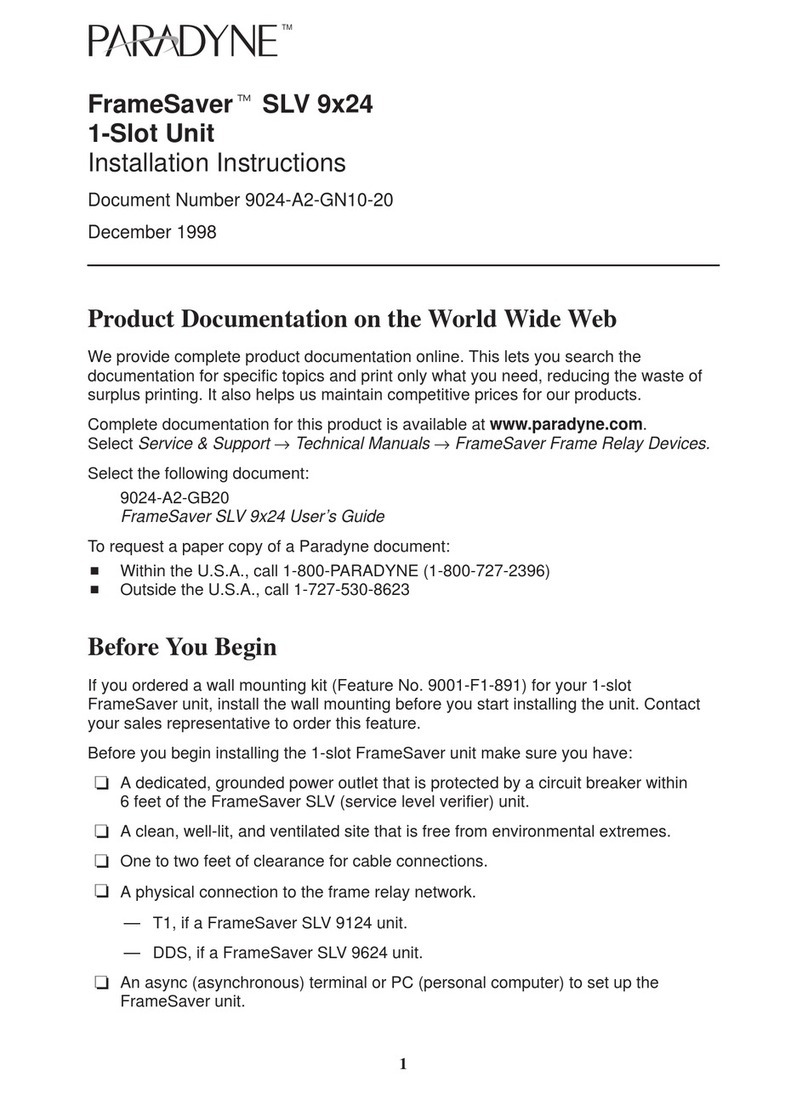
Paradyne
Paradyne FrameSaver SLV 9x24 Series installation instructions
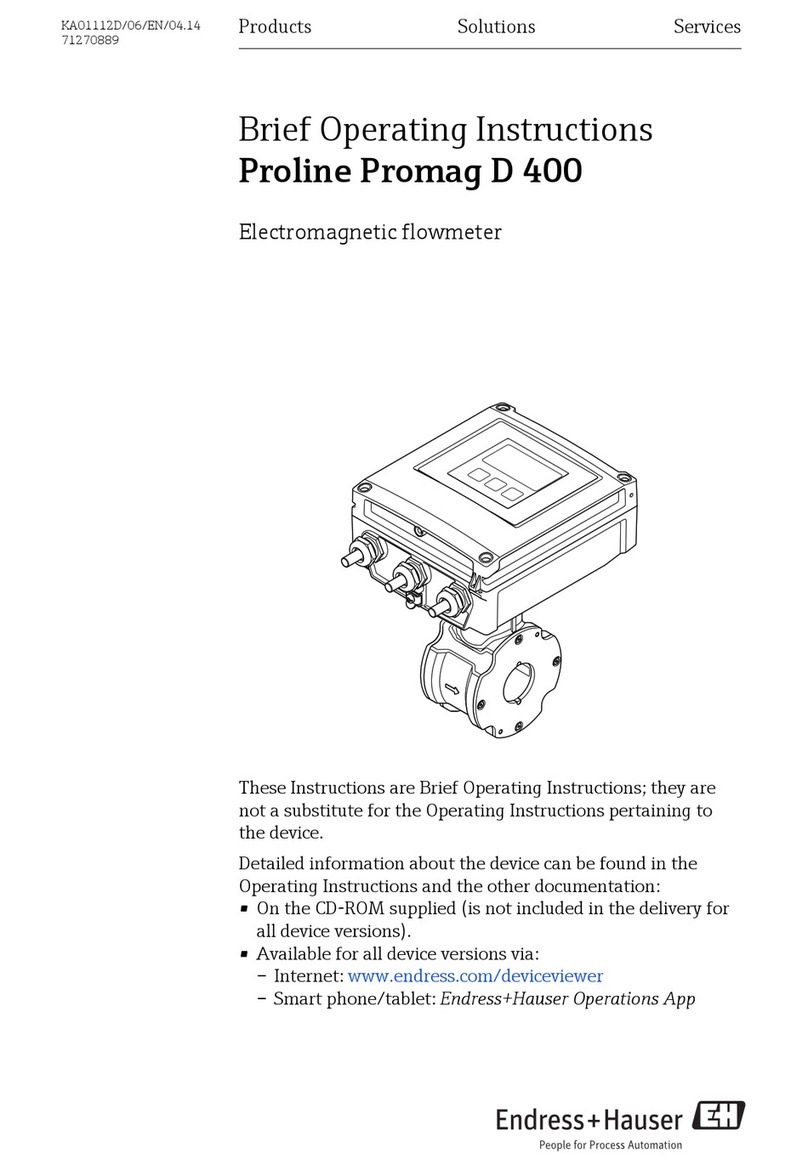
Endress+Hauser
Endress+Hauser Proline Promag D 400 Brief operating instructions
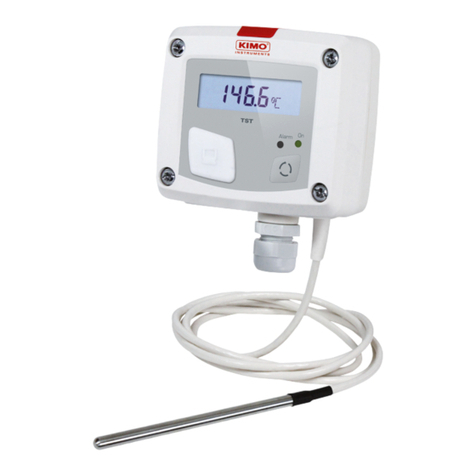
sauermann
sauermann TST quick start guide
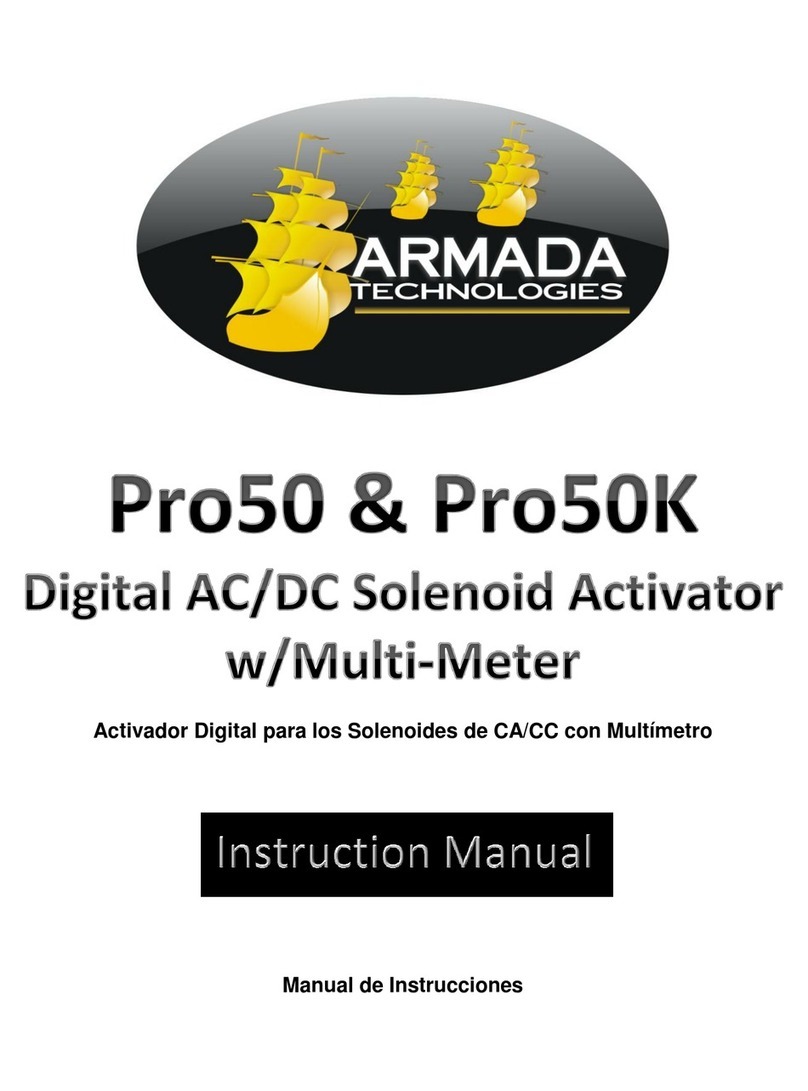
Armada Technologies
Armada Technologies Pro50K instruction manual

Trans instruments
Trans instruments BP3001 Operation manual
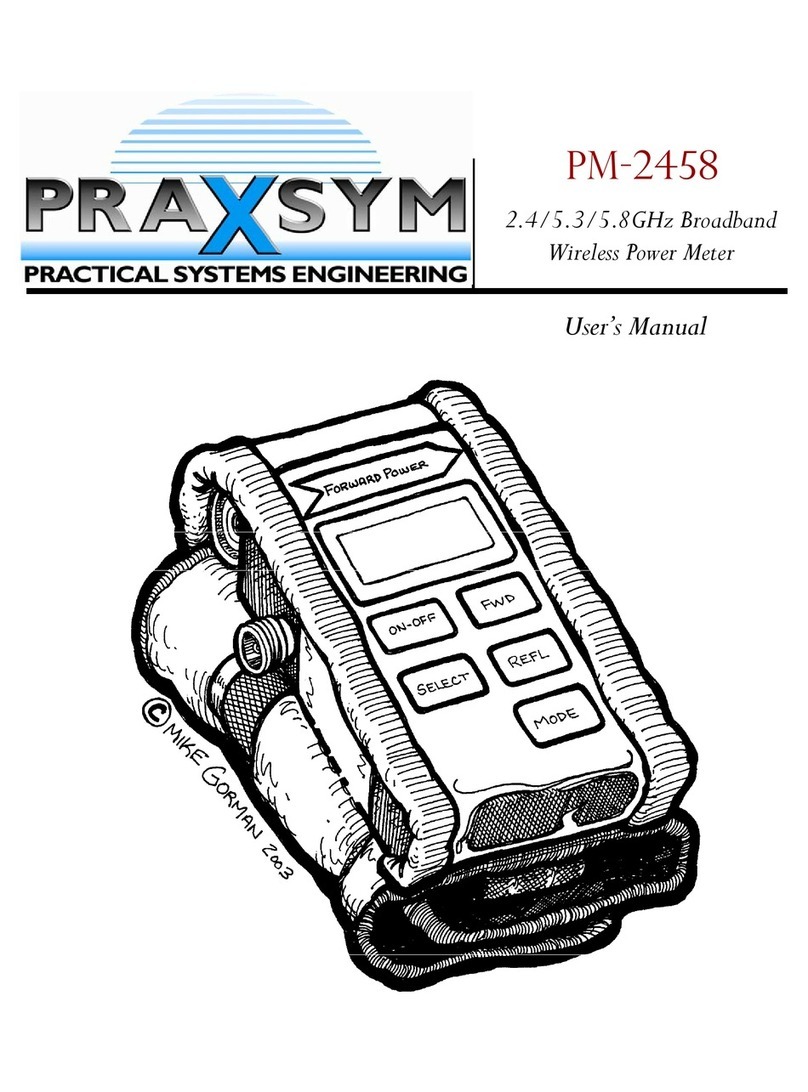
PRAXSYM
PRAXSYM PM-2458 user manual
